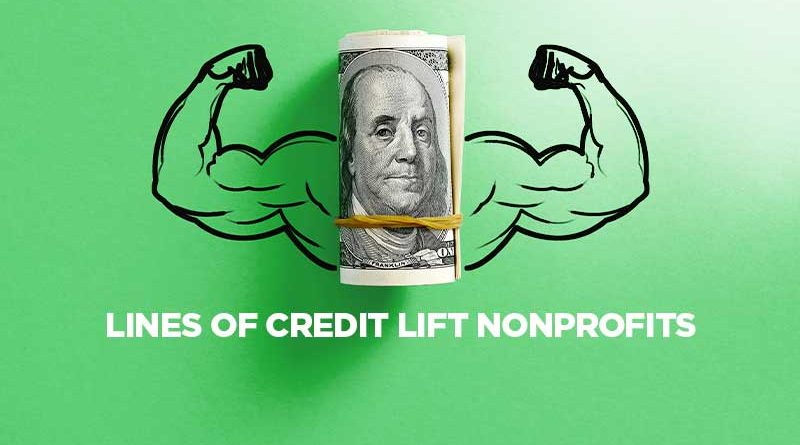A Nonprofit Line of Credit Helps Ensure Continued Strength and Stability
It may not be something a lot of nonprofits stop and think about, in fact, it’s something that should typically be avoided, but a nonprofit line of credit can help ensure strength and stability. What’s more, it can be a cornerstone for the foundation upon which a nonprofit successfully operates. The cost of operation can be very challenging. Unforeseeable events can happen, and they may sometimes overwhelm nonprofits. As a result, they risk losing sight of their ultimate program goals and objectives. GrantWatch wants nonprofits to know and understand the value in having a line of credit. But more than that, it’s vital to know when to use it and how to use it properly.
How a Nonprofit Line of Credit Works
Before we begin, it’s important to note that lines of credit for nonprofits work a bit differently than they do for individuals. In addition, it’s a very big decision, so use caution. Consider instead that it should act as a financial safety net. It gives nonprofits the ability to access a set amount of money when they need it. It’s a bit like having a money cushion that lasts for about a year and gets an annual refresh. To greenlight a line of credit, banks and credit unions typically focus on four main aspects: collateral, personal guarantees, credit scores, and financials. Nonprofits are only charged when they dip into this credit pool. However, it should be noted, you should always be vigilant against setup and upkeep fees.
When nonprofits tap into their credit line, they receive a small fee or interest rate for the borrowed cash. However, it’s usually not too pricey, especially considering the good work these institutions bring to their communities. Once a nonprofit pays off what it borrowed, it’s fee-free sailing. It’s not uncommon for nonprofits to borrow during uncertain times or due to an unavoidable catastrophic event. After all, once they pay it off, they are free to keep it open for future use.
One popular use of this credit line is to make sure your team gets paid on time; especially when cash flow is light. Missing payroll is a big no-no, and this credit line helps nonprofits stay on the right side of the law. Now, where can a nonprofit snag this handy credit line? Well, they can contact a local bank or explore alternative lenders for their financial backup plan.
Below is a special list from GrantWatch that provide payroll and other funding needs if a line of credit isn’t an option .
Grants for Nonprofits to Cover Payroll and Other Operating Expenses
- Grants of up to $10,000 to nonprofits and Tribes for a range of humanities activities and programs. In addition, priority is for organizations based in rural communities and/or led by People of Color (BIPOC) communities. Moreover, they support program expenses, including program/project planning costs and management salaries.
- There are grants to nonprofits for high-demand occupation apprenticeship positions, with an emphasis on employment of individuals from marginalized groups. Also, apprentices will enter high-demand occupations and trades, with a primary focus on healthcare, information technology, advanced in-demand occupations. In fact, the priority is to recruit women and underrepresented populations. This includes minorities and individuals with disabilities. Allowable costs include direct costs associated with operating the program.
- In addition, grants to eligible businesses and nonprofits for support in the wake of the Coronavirus (COVID-19) healthcare crisis. In fact, funding is to cover costs associated with rent, mortgage, utility expenses and payroll expenses, including healthcare.
- Grants to small businesses and nonprofits to mitigate financial impacts of the Coronavirus (COVID-19) health crisis. Altogether, nonprofit sectors include community arts, humanities, and cultural organizations. Nonprofit sectors also include community-based human services organizations.
- Also, there are grants to nonprofits to reduce the negative financial impact of the Coronavirus (COVID-19) pandemic. In addition, program purpose is to help organizations better serve at-risk, vulnerable, and disadvantaged populations. In addition to general operational support, Funding uses also include payroll and employee benefits, rent or mortgage, and utilities.
We hope this helps you understand the role a line of credit can play on the nonprofit stage. It affords them the stability and freedom they need to accomplish their mission!
About GrantWatch
With close to 8,000 grants currently available, GrantWatch.com is the leading grant listing directory. Upgrade to a MemberPlus+ subscription to view the full grant details, including eligibility criteria and application information. So, for more information, you can also visit the GrantWatch FAQ page. In closing, to see the great value of all 20 of the top GrantWatch features, click here.
Please note that neither GrantWatch nor this author guarantee the award of grants as a result of this information. Additionally, GrantWatch is not a financial advisor. We do not endorse taking out a line of credit without considering the associated risks.

